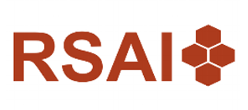Tertiary industries’ value-added as a linkage’s engine: An interstate input-output application for Brazilian regions
Tertiary industries’ value-added have been considered an essential input for any production chain, as they have the potential to connect regions and services activities across networks. Moreover, spatially, services move more straightforward than the manufacturing of resource-based industries. This study estimates the interregional and inter-industry linkages regarding a set of services-related economic sectors and accounts for the trade in value-added (TiVA) measures, considering intraregional and interregional trade based on an interstate input-output application for Brazil. The main findings reveal that the poorest Brazilian states tend to lose linkages opportunities in services activities, remaining hostages to supply natural resources to production networks for subnational and foreign demand. On the other hand, the potential for gains from connections in the services’ networks reveals greater spatial dispersion across regional hierarchies, increasing the concentration in large urban agglomerations. In this regard, the paper concludes that the connectivity potential of services at the intraregional level can be an essential starting point to promote innovative systems away from large urban areas in the wealthiest regions inside Brazil, potentially reducing value-added imbalances in internal geography trade flows.
Check other articles from the issue Issue 54 – Autumn 2022 or from other issues.


